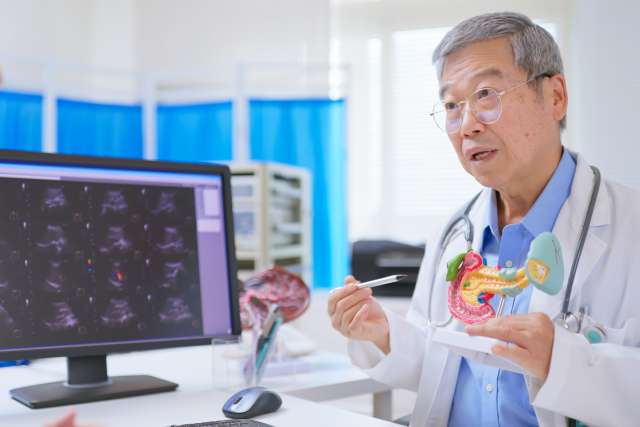Mirror neurons, many say, are what make us human. They are the cells in the brain that fire not only when we perform a particular action but also when we watch someone else perform that same action.
Neuroscientists believe this "mirroring" is the mechanism by which we can "read" the minds of others and empathize with them. It's how we "feel" someone's pain, how we discern a grimace from a grin, a smirk from a smile.
Neuroscientists believe this "mirroring" is the mechanism by which we can "read" the minds of others and empathize with them. It's how we "feel" someone's pain, how we discern a grimace from a grin, a smirk from a smile.
Problem was, there was no proof that mirror neurons existed — only suspicion and indirect evidence. Now, reporting in the April edition of the journal Current Biology, Dr. Itzhak Fried, a UCLA professor of neurosurgery and of psychiatry and biobehavioral sciences, Roy Mukamel, a postdoctoral fellow in Fried's lab, and their colleagues have for the first time made a direct recording of mirror neurons in the human brain.
The researchers recorded both single cells and multiple-cell activity, not only in motor regions of the brain where mirror neurons were thought to exist but also in regions involved in vision and in memory.
Further, they showed that specific subsets of mirror cells increased their activity during the execution of an action but decreased their activity when an action was only being observed.
"We hypothesize that the decreased activity from the cells when observing an action may be to inhibit the observer from automatically performing that same action," said Mukamel, the study's lead author. "Furthermore, this subset of mirror neurons may help us distinguish the actions of other people from our own actions."
The researchers drew their data directly from the brains of 21 patients who were being treated at Ronald Reagan UCLA Medical Center for intractable epilepsy. The patients had been implanted with intracranial depth electrodes to identify seizure foci for potential surgical treatment. Electrode location was based solely on clinical criteria; the researchers, with the patients' consent, used the same electrodes to "piggyback" their research.
The experiment included three parts: facial expressions, grasping and a control experiment. Activity from a total of 1,177 neurons in the 21 patients was recorded as the patients both observed and performed grasping actions and facial gestures. In the observation phase, the patients observed various actions presented on a laptop computer. In the activity phase, the subjects were asked to perform an action based on a visually presented word. In the control task, the same words were presented and the patients were instructed not to execute the action.
The researchers found that the neurons fired or showed their greatest activity both when the individual performed a task and when they observed a task. The mirror neurons making the responses were located in the medial frontal cortex and medial temporal cortex, two neural systems where mirroring responses at the single-cell level had not been previously recorded, not even in monkeys.
This new finding demonstrates that mirror neurons are located in more areas of the human brain than previously thought. Given that different brain areas implement different functions — in this case, the medial frontal cortex for movement selection and the medial temporal cortex for memory — the finding also suggests that mirror neurons provide a complex and rich mirroring of the actions of other people.
Because mirror neurons fire both when an individual performs an action and when one watches another individual perform that same action, it's thought this "mirroring" is the neural mechanism by which the actions, intentions and emotions of other people can be automatically understood.
"The study suggests that the distribution of these unique cells linking the activity of the self with that of others is wider than previously believed," said Fried, the study's senior author and director of the UCLA Epilepsy Surgery Program.
"It's also suspected that dysfunction of these mirror cells might be involved in disorders such as autism, where the clinical signs can include difficulties with verbal and nonverbal communication, imitation and having empathy for others," Mukamel said. "So gaining a better understanding of the mirror neuron system might help devise strategies for treatment of this disorder."
Other authors on the study included Arne D. Ekstrom, Jonas Kaplan and Marco Iacoboni, all of UCLA. The project was supported by the National Center for Research Resources, a component of the National Institutes of Health (NIH). The authors report no conflict of interest.
The UCLA Department of Neurosurgery is committed to providing the finest and most comprehensive patient care through innovative clinical programs in minimally invasive brain and spinal surgery; neuroendoscopy; neuro-oncology for both adult and pediatric brain tumors; cerebrovascular surgery; stereotactic radiosurgery for brain and spinal disorders; surgery for movement disorders such as Parkinson's disease; and epilepsy surgery. For 20 consecutive years, the department has been ranked among the top 10 neurosurgery programs in the nation by U.S. News & World Report.
The UCLA Department of Psychiatry and Biobehavioral Sciences is the home within the David Geffen School of Medicine at UCLA for faculty who are experts in the origins and treatment of disorders of complex human behavior. The department is part of the Semel Institute for Neuroscience and Human Behavior at UCLA, a world-leading interdisciplinary research and education institute devoted to the understanding of complex human behavior and the causes and consequences of neuropsychiatric disorders.
For more news, visit the UCLA Newsroom and follow us on Twitter.



